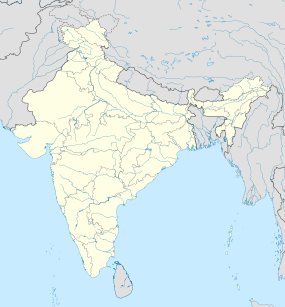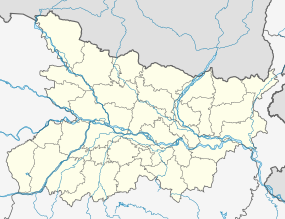Nalanda Mahavihara
| नालंदा | |

The ruins of Nalanda Mahavihara
|
|
| Location | Nalanda district, Bihar, India |
|---|---|
| Coordinates | 25°08′12″N 85°26′38″E / 25.13667°N 85.44389°ECoordinates: 25°08′12″N 85°26′38″E / 25.13667°N 85.44389°E |
| Type | Centre of learning |
| Length | 800 ft (240 m) |
| Width | 1,600 ft (490 m) |
| Area | 12 ha (30 acres) |
| History | |
| Founded | 5th century CE |
| Abandoned | 13th century CE |
| Events | Likely ransacked by Bakhtiyar Khilji in c. 1200 CE |
| Site notes | |
| Excavation dates | 1915–1937, 1974–1982 |
| Archaeologists | David B. Spooner, Hiranand Sastri, J.A. Page, M. Kuraishi, G.C. Chandra, N. Nazim, Amalananda Ghosh |
| Public access | Yes |
| Website | ASI |
| Official name | Archaeological Site of Nalanda Mahavihara (Nalanda University) at Nalanda, Bihar |
| Type | Cultural |
| Criteria | iv, vi |
| Designated | 2016 (40th session) |
| Reference no. | 1502 |
| State Party | India |
| ASI No. N-BR-43 | |
Nalanda (IAST: Nālandā; /naːlən̪d̪aː/) was an acclaimed Mahavihara, a large Buddhist monastery in the ancient kingdom of Magadha (modern-day Bihar) in India. The site is located about 95 kilometres (59 mi) southeast of Patna near the town of Bihar Sharif, and was a centre of learning from the seventh century BCE to c. 1200 CE. It is a UNESCO World Heritage Site According to Xuansang and Yijing Nalanda was built in honor of the Lotus Sutra - and various Lotus Sutra symbolism can be found in the Nalanda Museum.
The highly formalized methods of Vedic learning helped inspire the establishment of large teaching institutions such as Taxila, Nalanda, and Vikramashila which are often characterised as India's early universities. Nalanda flourished under the patronage of the Gupta Empire in the 5th and 6th centuries and later under Harsha, the emperor of Kannauj. The liberal cultural traditions inherited from the Gupta age resulted in a period of growth and prosperity until the ninth century. The subsequent centuries were a time of gradual decline, a period during which the tantric developments of Buddhism became most pronounced in eastern India under the Pala Empire.
At its peak, the school attracted scholars and students from near and far with some travelling all the way from Tibet, China, Korea, and Central Asia. Archaeological evidence also notes contact with the Shailendra dynasty of Indonesia, one of whose kings built a monastery in the complex.
...
Wikipedia


